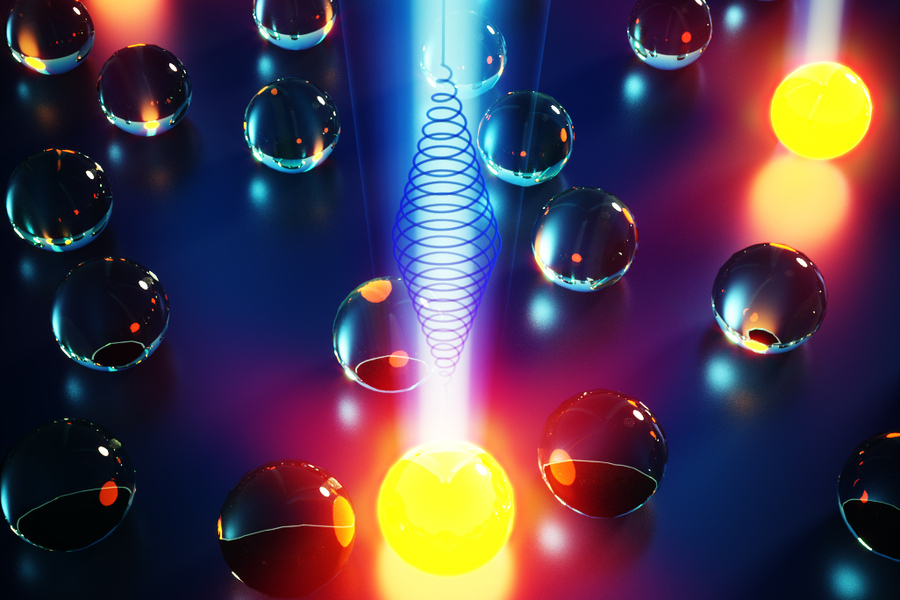|
Getting your Trinity Audio player ready...
|
Nanoscale crystals called quantum dots are able to emit a range of colors of light. Quantum dot-based displays promise improved power efficiency, brightness, and color purity over earlier display generations. Red, green, and blue are the three colors typically needed to display full-color images; the last has proven to be the most challenging to produce. A novel approach based on self-organizing chemical structures provides a remedy, and the production and analysis of these novel blue quantum dots required a state-of-the-art imaging technique.
If you look closely at your device’s screen, you might be able to make out the individual pixels that make up the image. Although they can appear in almost any color, subpixels, which are typically red, green, and blue, make up pixels, making them the smallest element on your screen. Since the intensity of these subpixels varies, each individual pixel appears to be one color out of a vast array of colors. Subpixels’ underlying technology has advanced since the era of early color television, and there are now a variety of options available. However, so-called quantum dot light emitting diodes, or QD-LEDs, are probably going to be the next big step.
Although QD-LED displays are already available, the technology is still in its early stages, and the available models have some shortcomings, particularly with regard to their blue subpixels. The most significant blue subpixels are those of the three primary colors. Down-conversion is the process by which blue light is converted into green and red light. Blue quantum dots therefore need more tightly regulated physical parameters. This frequently means that producing blue quantum dots is extremely difficult and expensive, and that the quality of these dots is crucial to any display. But now, a group of scientists under the direction of Professor Eiichi Nakamura from the Department of Chemistry at the University of Tokyo have a remedy.
According to Nakamura, “Previous design strategies for blue quantum dots were very top down, taking relatively large chemical substances and refining them into something that worked through a series of processes.” “We have a bottom-up approach. Our team’s expertise in self-organizing chemistry enabled us to precisely manipulate molecules until they took the desired forms. Imagine it as building a house out of bricks as opposed to carving one out of stone. It’s much simpler to be precise, to design how you want, and it’s also more effective and efficient.”
But the blue quantum dot created by Nakamura’s team is special not just because of how it was created; when exposed to ultraviolet light, it produces almost flawless blue light, in accordance with the BT.2020 international standard for measuring color accuracy. This is because their dot has a special chemical composition that combines both organic and inorganic substances, such as lead perovskite, malic acid, and oleylamine. And they can only be forced into the necessary shape, a cube of 64 lead atoms, four to a side, through self-organization.
“Unexpectedly, discovering that malic acid was a crucial component of our chemical puzzle was one of our biggest challenges. Finding it took more than a year of methodical experimentation with various things “Nakamura said. “Perhaps less shockingly, figuring out the structure of our blue quantum dot was our other major obstacle. By conventional methods, it is impossible to image the structure of a quantum dot because it is 2.4 nanometers in size, which is 190 times smaller than the wavelength of the blue light we sought to produce with it. So, we used an imaging technique called SMART-EM, or “cinematic chemistry,” which was developed by some members of our team.”
The evolution of electron microscope imaging known as “cinematic chemistry” is more akin to filming a video than taking a still photo. This is crucial for capturing the structure of the blue quantum dot in its entirety because the nanocrystal is actually quite dynamic and only a portion of its story can be conveyed by a single image. Unfortunately, the blue quantum dot also has a short lifespan, but this was to be expected. The team is now working with industry to increase the stability of the blue quantum dot.


